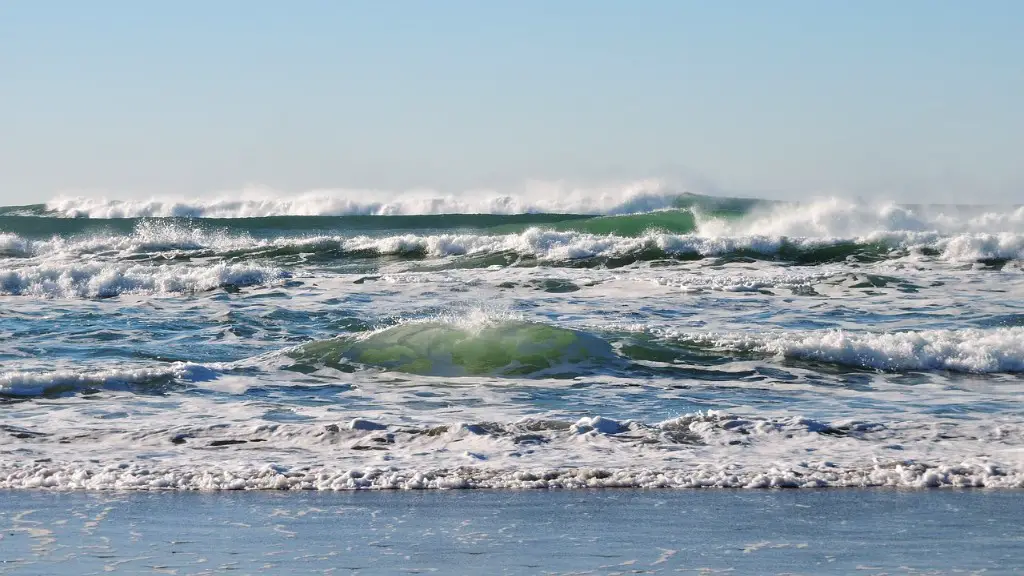The South China Sea is the subject of one of the world’s most complicated and long-standing geopolitical conflicts. At its heart, the struggle is about who has the right to control the vast maritime region that is believed to contain huge supplies of oil and natural gas, as well as having immense strategic military importance. Political tensions in the South China Sea have been rising for decades, with a complex blend of historical, economic and national security issues at play.
The People’s Republic of China (PRC), Taiwan, Malaysia, Vietnam, Brunei and the Philippines all have overlapping claims to the waters and islands of the South China Sea, some of which are extremely disputed. In addition to the PRC and Taiwan, other countries have naval bases in the region, including India, Thailand, Japan and the US. China labels the area its ‘Blue National Soil’ and insists that it has evidenced historical rights of sovereignty over the region.
The PRC has made increasingly bold moves to assert its territorial claims over the past few years, including construction and dredging of artificial islands, aggressive naval patrols and provocative military exercises. China claims almost the entire South China Sea as its own, to the point that it was accused of having built a nine-dash line on maps to mark out the area of its supposed historical rights.
The Hague-based Permanent Court of Arbitration issued an award in July 2016 on the South China Sea dispute between China, the Philippines and other claimants. The Court’s decision invalidated China’s nine-dash line claiming historical rights over virtually all of the South China Sea. This resolution, however, had no immediate legal effect, and diplomatic tensions continue to simmer.
Other nations continue to express their concern over China’s activities in the South China Sea, accusing it of ‘bullying’ tactics and of disregarding international law. The US brought matters to a head in December 2019, when it launched Freedom of Navigation Operations in the South China Sea, sailing warships inside the 12 nautical miles of the PRC-claimed islands. This sparked yet another war of words between the two countries, but so far the situation has not escalated beyond a high-level diplomatic argument.
The dispute in the South China Sea is now a major international issue, with the US, Europe and Japan all expressing increasingly strong objections to Beijing’s actions. When the Association of Southeast Asian Nations (ASEAN) met in Cambodia in 2012, they agreed on a ‘Declaration of Conduct of Parties in the South China Sea’. This document was a commitment to the peaceful resolution of disputes and to refraining from activities that could ‘complicate or escalate disputes and affect peace and stability’.
International law is the foundation of any compromise in the South China Sea region, and the countries involved must follow it. Unfortunately, this is not always the case. Despite the United Nations Convention on the Law of the Sea, as well as several regional agreements, different countries seem unwilling to compromise, choosing instead to use force to assert their positions. This is a dangerous path that could lead to serious military conflict.
Destruction of Marine Life
In addition to the geopolitical conflict between different nation states, the environmental damage caused by irresponsible activity in the South China Sea is a major problem. Overfishing and illegal trawling have become serious threats, along with land reclamation and construction of artificial islands. The destruction of coral reefs, seagrass beds and mangrove forests have had a huge impact on the region’s marine life, transforming what was once a rich and diverse ecosystem into a shadow of its former self.
The region’s species are facing rapid decline, with the situation exacerbated by climate change, ocean acidification and pollution. Vulnerable species such as the Chinese white dolphin and the critically endangered Chinese paddlefish have been particularly badly affected. Thousands of species of fish, sharks and corals have been lost and the marine life further disrupted by the activities of large vessels in the region.
Such destruction of marine life has been driven by the political and legal disputes in the South China Sea. Without a better understanding of this conflict, it is impossible to protect and preserve the region’s precious marine life, which is essential to the livelihood of some of the world’s poorest people.
Oil and Gas Potential
The presence of vast potential oil and gas reserves in the South China Sea has been a major reason for the dispute between different nations in the region. China has claimed an area of the South China Sea containing some of the richest energy reserves in the region, and has made numerous attempts to exploit them. Vietnam, Indonesia and the Philippines have also expressed their interest in the oil and gas reserves, and diplomatic tensions have been high.
The oil and gas reserves of the South China Sea have quickly become the focus of some of the world’s leading energy companies. China National Offshore Oil Corporation (CNOOC) and China Petroleum & Chemical Corporation (Sinopec) have been the most active players, with numerous exploration activities in the region. The development of oil and gas infrastructure such as rigs, platforms and pipelines has had an environmental impact, further disrupting the region’s marine life.
The potential of this region has also attracted the attention of multinational companies from outside the region, and significant investment has been made in the South China Sea. Major names such as ExxonMobil, Shell and Chevron have all been involved in exploration and exploitation activities in the region, despite the political and legal disputes.
The South China Sea region is estimated to contain more than 100 billion barrels of oil and vast supplies of natural gas. While the potential for massive profits beckons, the sheer scale of the dispute has so far prevented anyone from exploiting these resources. Until a legal resolution is reached, the South China Sea will remain a geopolitical flashpoint.
Resource Ownership
The UN Convention on the Law of the Sea (UNCLOS), which has been ratified by 167 countries, has had a major impact on the South China Sea dispute. UNCLOS gives countries the right to claim resource rights within 200 nautical miles of their coastlines, known as an exclusive economic zone. This means that any resources within the zone are owned by the state, although other countries have the right to fish, prospect for resources and lay cables or pipelines.
The issue of resource ownership in the South China Sea is complicated by the presence of several claimants and the lack of an international body with the authority to settle disputes. This means that there is no clear legal framework for ownership, leading to frequent clashes between different nations. Countries such as the Philippines and Vietnam have been particularly vocal in their claims, while China has been adamant that it has the right to exploit resources in the region.
The lack of a unified legal framework for resource ownership has been a major stumbling block in the South China Sea dispute. Without a clear and legally binding agreement between different nations, the issue of resource rights in the region is likely to remain unresolved for the foreseeable future.
Territorial Disputes
The main sticking point in the South China Sea dispute is the issue of territorial rights. China insists that its nine-dash line gives it historical rights over much of the region, while other countries claim their rights are based on UNCLOS. These two positions cannot be reconciled, and the regional governments involved appear unwilling to compromise. This has resulted in ongoing diplomatic tension between different nations, as well as frequent military posturing.
The other countries have expressed strong opposition to China’s actions in the region, accusing it of trying to bully its neighbors. The US and its allies have increased their naval presence in the region in an attempt to counter Chinese moves, while multinational corporations have become increasingly involved in exploration and exploitation activities.
The future of the South China Sea dispute lies in the hands of the governments involved. Without a political resolution that takes into account the rights of all countries, the situation is likely to remain tense and frustrating.
Regional Organizations
A number of regional organizations such as the Association of Southeast Asian Nations (ASEAN) and the South China Sea Council (SCSC) have emerged in an effort to foster regional cooperation and to reduce tensions in the South China Sea. These organizations have promoted an informal dialogue between the claimants, although their efforts have been limited by the divergence of views between different countries.
ASEAN is the most prominent of these organizations, and it has taken a leading role in seeking to resolve the South China Sea dispute. The member countries have agreed on a ‘Declaration of Conduct of Parties in the South China Sea’, which commits them to the peaceful resolution of disputes and to the non-use of force or the threat of force. While this agreement is a positive step in the right direction, more concrete measures are needed to reach a lasting political resolution.
The South China Sea Council (SCSC) is a lesser-known organization that has also been attempting to reduce tensions in the region. The SCSC was formed in 2010, and it seeks to address the issues of resource development and maritime security in the region. The organization has also adopted a code of conduct, which includes several key principles that seek to foster the peaceful resolution of disputes.
The regional organizations that have emerged in the South China Sea region have made important strides in promoting dialogue and understanding between the different governments, and they have been instrumental in facilitating informal negotiations. The challenge, however, is to increase the level of coordination between the different countries and to ensure that any agreement is legally binding.
Implications for Global Security
The political and legal disputes in the South China Sea have serious implications for global security. The area is a major shipping route and is believed to contain vast reserves of oil and gas, which has attracted the attention of major energy companies. The US has been particularly active in the region, and a rising tide of militarization and naval posturing has further aggravated the situation.
These developments have had an impact on the global balance of power, with the US and its allies seeking to contain China’s rise to power. The US has deployed warships to the region, while China has deployed its own vessels in an attempt to assert its claims. The situation is still volatile, and any further deterioration could have a major impact on global security.
The potential for conflict in the South China Sea is a threat to the entire region, with the potential for a major open conflict between different nations. The geopolitical and environmental implications of any conflict could be disastrous, and the international community must take serious steps to avert this possibility. A lasting political solution is needed, one that takes into account the interests of all the nations involved.
Conclusion
The South China Sea is the scene of one of the world’s most complex and long-standing conflicts, with numerous legal, political and environmental issues at stake. China has made increasingly bold moves to assert its territorial claims, while other countries have responded with their own military posturing. Several regional organizations have emerged in an effort to reduce tensions, but a lasting political solution is still lacking.
The region is estimated to contain vast reserves of oil and gas, and the potential for conflict is escalating as different countries look to stake their claim to these resources. This is a dangerous path, and it is essential that a legal framework be established that takes into account the interests of all





